Travel Guide Books
"How to choose your travel bible"
"Travel Guide Books" was last updated on March 03, 2013
Quick links:
So which travel guides should you choose?
Which one is the best?
These questions are hard to answer because travelers have different opinions and different taste.
The most popular guide books are of course Lonely Planet, Rough Guides and National Geographic, just to mention a couple.
While Foot print is the longest living guide book in English.
For starters, here are some backpacking beginner tips on what to consider before purchasing that special guide book.
Ask yourself these questions
before purchasing travel guide books:
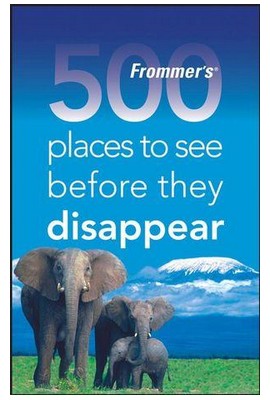
- The obvious part: Where are you going? Are you covering all the countries in Southeast Asia? (Buy a book that covers all the countries in Southeast Asia, instead of 11 separate books ) Lonely Planet, Rough Guides, Footprint, Frommers and more sell books which cover whole of Southeast Asia.
- What type of information am I looking for? Am I looking for more reviews than general information? Or do you want both? What kind of places do you want reviews of?
TIP!
Go to a library or a book shop, and compare different guide books. How is book A approaching the theme on, for example trekking, compared to book B?
Don't be fooled by beautiful pictures. Content is priority number 1!
Homosexual travelers will probably find the Utopia books more relevant than Rough Guides.
Utopia covers and targets hot spots and meeting places for homosexuals in Asia, and also organizations and accommodation.
To read more about Utopia books, click onto the link. (Opens in a new window)
- Is the book practical? How is the information divided? If you just wanted to look it up, could you do it fast or do your eyes have to search and search?
The travel guide books I've read (Lonely Planet, Footprint and Rough Guides) have a lot of information, and they all have divided the text into logical sections.
You'll find bold lettering where they're supposed to be, but I have to admit that I do miss more bold lettering in the town sections of Footprint (India).
- How do I want that information served?
Are you a visual person who wants many pictures? Or maybe coloring in the books? How about maps?
There are usually maps of the countries, main cities and towns in travel guide books, which make everything easier when you're in town and feel lost.
While Footprint (I have the India Handbook 2009) has colored mini atlas with regional maps and a railway map. As a backpacker, good maps are very helpful.
Pictures speak louder than words and are the best way to break up the text. Most travel guide books (like Lonely Planet and Rough Guides) have a few pictures in the beginning or in the end of a book.
But don't expect too many pictures because pictures do take space, and more space means more weight The mentioned books are for backpackers, and the creators of travel guide books aim at portable books.
- When it comes to coloring, it's usually easier for the visual persons to read texts in some coloring, especially when there's so much information.
The coloring works, as you know, as distinguisher and makes it less difficult to find the information you're looking for. An example of that is Rough Guides (at least the Southeast Asia version from November 2008).
- How much does it weigh?
This is a crucial question. If you want to carry on the lightweight backpacking, I suggest you find out how much it weighs.
If you compare the weight of Rough Guides Southeast Asia (2008 - weighs 628 g) and the Lonely Planet SE Asia (2008 - weighs 754 g), Rough Guides is the winner here.
But then again, we're talking about 100 g in difference. Thats' like 20 US nickels.
TIP! Save weight by ripping out the sections you definitely don't need.
Another option is to buy the e-version of the book (Lonely Planet offers digital chapters). If you're bringing your Kindle or iPad anyway, why not save weight by purchasing digital books/chapters?
- How much does it cost?
What you're willing to spend on a travel guide depends on your budget. And also your thoughts on investment - is it worth to spend money on a book for a 3-week trip you're only going to do once?
Are you not sure if you want to
buy a travel guide book at all?
Thought so!
Well, to help you out, I've made a pron-and-con list. Hope this helps!
Pros:
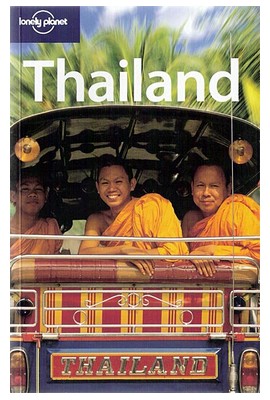
- Travel books usually have accurate and useful information; anything from reviews, examples of itineraries to local customs.
- It's about trust: when you're in a foreign country, finding a good and safe enough place to stay or eat is not always easy.
Yeah, locals will say that the restaurant across the street is good (but they somehow have relatives running the place...)
Travelers want the real information: Tested and tried. That's just common sense. And the people who have written guide books have usually been there, so you will get first-hand experiences.
Most of them won't sugar-coat their reviews and that's a huge relief.
- You will probably feel safer and more comfortable if you have something to look up into. A scenario is when you're trekking and you get lost. Where's the nearest village/town? Oh, wait a minute I can look it up!
Or when you're looking for a guesthouse and the one you heard of is fully booked. Where are the other recommended places in this town? In your travel guide book!
- Travel guide books are usually portable - they can be easy to travel with!
Cons:
- The version of the travel guide books you bought, won't of course be updated!
Like, you bought a travel guide book from 2010 (from a previous trip) and going backpacking again in 2012. Who can guarantee that the guesthouses mentioned in the guide books are still open ?
But then again, travel books in general can never be fully updated. I don't need to explain why. You just have to wait for the next edition.
- If you only stick to the attractions which the travel guide books refer to, you might miss the other off-the-beaten-track spots which aren't mentioned in the books.
- You're not the only backpacker who buys for example Lonely Planet. There are thousands, if not millions of other travelers who have the same book as you have, and that means that they're visiting the same places as you are. So much for holy off-the-beaten-track spots!
- Even if most of the travel guide books are lightweight, they still do weigh down your backpack . An example is the Lonely Planet India (which covers the entire India). It's full of good information, but it's thick and therefore it weighs more!
Look for guide winners like Lonely Planet, Frommers or Rough Guides through Amazon.com
Lonely Planet vs Rough Guides
Let me tell you about what the travel guide books I have at home.
I personally prefer Rough Guides and Lonely Planet.
I have to admit that Lonely Planet is the largest collection among my travel guide books, and mostly because it's considered as popular and because of its accuracy in its information (it's not always accurate, but good enough for me).
I have both of the series because I feel they complement each other.
Some of the Rough Guides books (at least those I own) have coloring, have more space and less rugged paper than the Lonely Planet. To me, that makes the reading easier. I want to be able to look up things fast.
And I love the way the authors talk to the readers. The Rough Guide authors have a sense of irony and down-to-earthiness (it appeals to me because I have the same sense of humor).
Lonely Planet on the other hand, collect the useful information at one place.
Example: The prices for accommodation in The Rough Guides are divided into price groups; like 1, 2, 3 etc. The codes for these price groups are written in the back cover. The Lonely Planet on the other hand has the prices and the reviews of that actual hostel/guesthouse in the same paragraph.
I also have Footprint (India Handbook 2009). I just love the information which Footprint provide, but I don't like the commercial which is included in the start section.
Other Travel Guides:
I've written three eBooks for Backpacking Tips Asia.com - all of them have received good reviews from travel experts and readers.
Return to top of Travel Guide Books
Guide Book Articles
Review of Lonely Planet Thailand
I've read a lot of Lonely Planet travel guides, including Lonely Planet Thailand Islands & Beaches.
Here's my review! :-)
Click for Lonely Planet review
|
Further reading: |
Like this page?
|
Have Thoughts on Guide Books?
What are your thoughts on the use of travel guides? Do we need them? Why not? What's your favorite travel guide book?
Share it with us right here!
What Other Visitors Have Said
Click below to see contributions from other visitors to this page. You can also comment the posts below.
Need Advice on Budget Guide Books for Myanmar, Northern India or Nepal 




Hi,
I am a hardcore backpacker (65 countries over 15 years). I had always used Lonely Planet guidebooks, but years ago I became fed up with them because …
New Lonely Planet book format 




Hello,
Lonely Planet has recently reformatted their entire line well established, tried and true travel guides starting in mid 2011.
Personally, …
Follow This Site
Search this site
Most popular articles
» Travel Forum: Itineraries
» Travel Insurance
» Nightlife in Kuala Lumpur
» Route Planner
» Packing List
» Life After Backpacking
» Kuala Lumpur Malaysia
» Perhentians Malaysia
» Review of massage in Kerala
» Review of Erawan waterfalls/
Connect with us

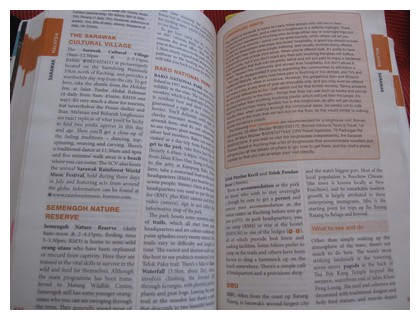
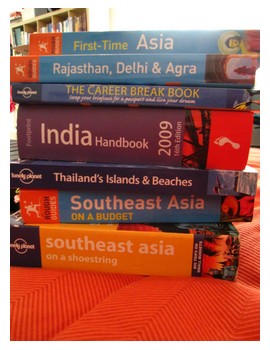
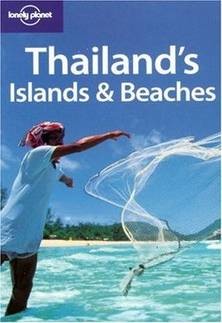


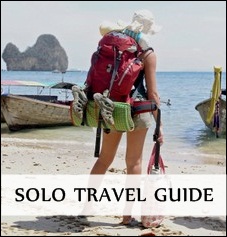
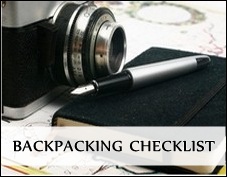
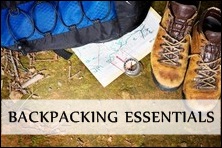
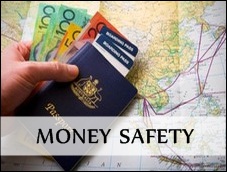
Comment this page:
Have your say about what you just read! Leave me a comment in the box below.